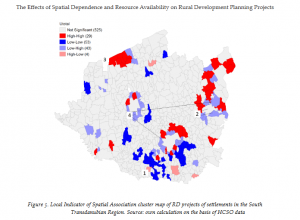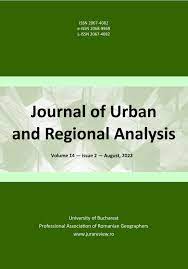The Effects of Spatial Dependence and Resource Availability on Rural
Development Planning Projects in the Heterogeneuos Micro–Regions of The Southern Transdanubian Region, Hungary
Journal of Urban and Regional Analysis
Volume 14, Issue 2, 2022, pp. 159–186
Abstract
Applied methods and materials to support regional planning vary; planners update their analytical frameworks based on the newly available data. Development goals, priorities and strategies need to be based on available (local) resources, which are identified as either comparative advantages or uniform development goals at a certain planning level. This paper presents a novel analytical framework for the Rural Development Programme of the South Transdanubian Region (Hungary) for the period of 2021-2027.  Descriptive, cross tabulations and indicators of spatial autocorrelation were applied to the number of projects supported under the Rural Development sub-measures in 2014-2020. Large variation was observed in the LEADER development areas, and we confirmed that the pull effect of the regional centres is unclear. The results warn on the location-determined peripheries in the region. Agriculture oriented, even small settlements are better acceptors of rural development funds than other clusters of resource availability.
Descriptive, cross tabulations and indicators of spatial autocorrelation were applied to the number of projects supported under the Rural Development sub-measures in 2014-2020. Large variation was observed in the LEADER development areas, and we confirmed that the pull effect of the regional centres is unclear. The results warn on the location-determined peripheries in the region. Agriculture oriented, even small settlements are better acceptors of rural development funds than other clusters of resource availability.
Keywords: spatial autocorrelation; territorial planning model; rural development; local resources; regional clusters



